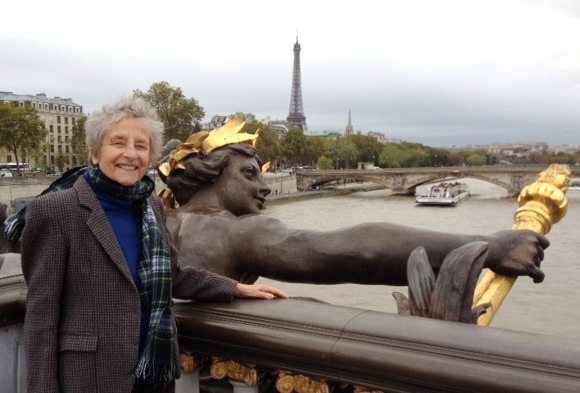
Something strange happened lately in the skies of France: drones were spotted over several nuclear plants, including one dangerously close to Paris in Nogent sur Seine. A few days later more drones flew over nuclear complexes. A wave of anxiety gripped the public opinion. Who was manipulating those machines? Was the country under threat?
Greenpeace was immediately suspected of being the one to operate the unmanned contraptions. As a pro-environmental watchdog this international association has a history of peaceful action against nuclear power. In 2012, a paraglider had landed on a nuclear installation to prove that the installation was not well protected. In July 2013, 29 activists broke into Tricastin nuclear plant, in southern France. Yannick Rousselet, head of the anti-nuclear Greenpeace campaign, vehemently denied any involvement this time in a television interview.
If Greenpeace had nothing to do with it, the question remained, who did? A few days later, three individuals suspected of operating the drones, were arrested. So, for now, the fear is defused. But it was a wake-up call of a potential danger.
The most advanced drone technologies are found in Israel and the US. To obtain current and accurate information, I interviewed a French engineer who used to work with a German company manufacturing drones. He told me that 10 years ago, all of them were built for military use, mostly for reconnaissance and surveillance. They included the HALE (High Altitude Long Endurance), MALE (Medium Altitude Long Endurance), tactical drones and portable drones for use in ground combat. The Israeli Watchkeeper with sensors and camera can fire missiles and bombs from sometimes thousands of miles away. Today drones have become a necessity in wars taking place in huge territories such as Mali.
France is at the cutting-edge of research but lacks funds to develop its ideas. As an example, Dassault designed the NEURON and produced one model, whereas the American PREDATOR, built in 2010, has already flown one million hours.
European countries are catching up with drone technology. On Nov. 5 of this year, François Hollande and David Cameron attended the signing of an agreement between Dassault Aviation and BAE Systems (British Aerospace and Marconi Electronics Systems) for a new generation of drones. Germany and Italy will be part of the project in the future.

Today civilian drones exist in all sizes and degrees of complexity. Drones called “Insects” (see photo above) are so small that they can be held in the palm of the hand. The Chinese DJI Fantom flies like an helicopter with quadrotors, carries a remote camera and is very popular with the general public. Drones have become invaluable at times of natural disasters to test the strength of bridges, in mapping, archaeology and multiple other uses.
But they can be dangerous, for example, causing the crash of commercial airplanes by entering the reactors. When a drone fell less than six feet from Angela Merkel during her political campaign in Sept. 2013, people realized that a drone was anything but a toy.

About the author: Nicole Prévost Logan divides her time between Essex and Paris, spending summers in the former and winters in the latter. She writes a regular column for us from her Paris home where her topics will include politics, economy, social unrest — mostly in France — but also in other European countries. She also covers a variety of art exhibits and the performing arts in Europe. Logan is the author of ‘Forever on the Road: A Franco-American Family’s Thirty Years in the Foreign Service,’ an autobiography of her life as the wife of an overseas diplomat, who lived in 10 foreign countries on three continents. Her experiences during her foreign service life included being in Lebanon when civil war erupted, excavating a medieval city in Moscow and spending a week under house arrest in Guinea.